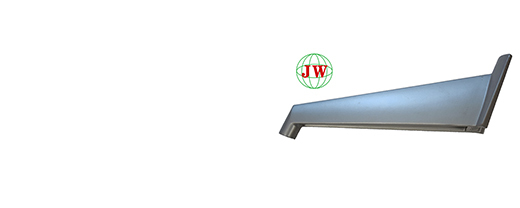
How can die casting of communication components improve the corrosion resistance of products?
2025-04-12 15:00
In the fast - paced world of communication technology, ensuring the longevity and reliability of products is of utmost importance. One critical aspect that directly impacts the lifespan of communication components is corrosion resistance. Die casting, a widely used manufacturing process in the production of communication components, has emerged as a powerful tool in enhancing the corrosion resistance of these products.
The Die - Casting Process and Its Influence on Corrosion Resistance
Die casting involves injecting molten metal, typically aluminum, zinc, or magnesium alloys, into a mold cavity under high pressure. This process results in components with high dimensional accuracy, complex geometries, and excellent surface finishes. When it comes to corrosion resistance, the die - casting process plays a significant role in several ways. Firstly, the high - pressure injection during die casting compresses the molten metal, creating a dense and homogeneous microstructure within the component. This dense structure reduces the presence of voids and porosity, which are potential sites for corrosion initiation. In communication components, such as those used in outdoor base stations or in humid environments, a dense microstructure is crucial as it minimizes the penetration of corrosive agents like moisture and chemicals.
Material Selection for Enhanced Corrosion Resistance
The choice of material in die casting is a key determinant of the corrosion resistance of communication components. Aluminum alloys are particularly popular in the communication industry due to their favorable combination of properties. Aluminum has a natural oxide layer that forms on its surface when exposed to air. This oxide layer, known as alumina, is highly stable and provides a protective barrier against corrosion. In die -casting, specific aluminum alloys are formulated with alloying elements such as silicon, magnesium, and zinc to further enhance their corrosion resistance. For example, alloys with higher silicon content can improve the fluidity of the molten metal during die casting, resulting in better - formed components with fewer defects. Additionally, these alloying elements can modify the structure of the aluminum oxide layer, making it more resistant to chemical attack. Zinc-based alloysare also used in die casting for certain communication applications. Zinc has good corrosion - resistant properties, and when alloyed with other elements, it can provide enhanced protection against specific corrosive environments. Magnesium alloys, although lighter in weight, require careful consideration as they are more prone to corrosion. However, through proper alloying and surface treatments, magnesium - die - cast communication components can also achieve acceptable levels of corrosion resistance.
Surface Treatments and Coatings in Die - Cast Communication Components
Surface treatments and coatings are essential steps in maximizing the corrosion resistance of die - cast communication components. After the die - casting process, components can undergo various surface treatments to enhance their protective properties. Anodizing is a common surface treatment for aluminum - die - cast components. During anodizing, an electrical current is used to thicken the natural oxide layer on the aluminum surface. This thicker oxide layer provides increased protection against corrosion, abrasion, and UV radiation. In communication applications, where components may be exposed to harsh outdoor conditions, anodized surfaces can significantly extend the lifespan of the products. Another popular surface treatment is electroplating. Electroplating involves depositing a thin layer of a more corrosion - resistant metal, such as nickel or chromium, onto the surface of the die - cast component. This layer acts as a sacrificial barrier, protecting the underlying metal from corrosion. For example, nickel - plated die - cast components can offer excellent resistance to moisture and certain chemicals, making them suitable for use in communication devices in humid or industrial environments. Powder coating is also widely used in the communication industry. Powder coatings are applied as a dry powder and then cured under heat to form a durable and protective finish. Powder - coated die - cast components not only provide corrosion resistance but also offer good aesthetic appeal, which is important for consumer - facing communication products.
Quality Control and Testing for Corrosion Resistance
To ensure that die - cast communication components meet the required standards of corrosion resistance, rigorous quality control and testing procedures are in place. Manufacturers conduct various tests to evaluate the corrosion performance of their products. Salt - spray testing is a commonly used method in which components are exposed to a salt - water mist in a controlled environment for a specified period. The appearance and integrity of the components are then examined to determine their resistance to corrosion. Electrochemical impedance spectroscopy (EIS) is another advanced testing technique that can provide detailed information about the corrosion behavior of the components. EIS measures the impedance of the component's surface in an electrolyte solution, allowing manufacturers to assess the effectiveness of the corrosion - protection mechanisms. In addition to these laboratory - based tests, real - world exposure testing is also carried out. Components are installed in actual communication installations, such as outdoor base stations or in - vehicle communication systems, and monitored over time to evaluate their long - term corrosion resistance.
In conclusion, die casting of communication components offers multiple avenues for improving the corrosion resistance of products. Through the optimization of the die - casting process, careful material selection, appropriate surface treatments, and strict quality control, manufacturers can produce communication components that are highly resistant to corrosion. This not only ensures the reliable operation of communication systems but also extends the lifespan of the products, reducing maintenance costs and environmental impact in the long run. As the communication industry continues to evolve and demand more reliable and durable products, the role of die casting in enhancing corrosion resistance will become even more crucial
Get the latest price? We'll respond as soon as possible(within 12 hours)












